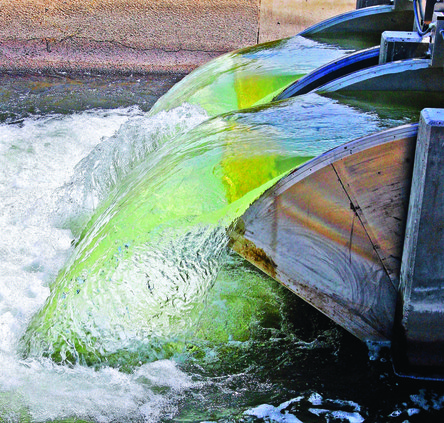There’s more rain and snow on the way.
But this time around it will be more of an early spring storm.
The National Weather Service is calling for light rain — less than a tenth of an inch — to fall on Manteca, Ripon, and Lathrop between late tonight and early Saturday.
Meanwhile, the series of atmospheric rivers has allowed South San Joaquin Irrigation District to push back the start of their irrigation season to April 13.
It marks the third time that SSJID has started the irrigation season as late as April since 1990. The other times were April 15, 1991, April 5, 1995 and April 20, 1998.
The storms and massive snowpack that was 237 percent of the average for April 1 in the Central Sierra that feeds the Stanislaus River watershed that SSJID growers as well as 120,000 urban customers in Manteca, Lathrop and Tracy rely on means there will be full water deliveries this year.
However, the SSJID — and the cities they supply — are continuing with measures to use water wisely.
That is based on the historic pattern of droughts coupled with growth pressures and shifting climate weather patterns.
The most recent drought periods in California were 1976 to 1977, 1986 to 1992, 2000 to 2002, 2006 to 2009, 2011 to 2017, as well as the current drought that appears to be winding down that started in 2020.
It isn’t rare — especially going back further with climate patterns in the West — for their to be only one or two years of either normal or above average precipitation between droughts.
SSID has used its extended winter maintenance and construction season to implement a new concrete pipe lining technology aimed at addressing leaks and conserving water.
“Our maintenance and construction crews are the heroes of this winter,” noted SSJID General Manager Peter Rietkerk. They were out there in stormy conditions removing debris and maintaining drains to pass stormwater through the system. They also made storm storm-related repairs so that SSJID is ready for this irrigation season. All this on top of our regular maintenance and replacement program . . . Hats off to them for their resiliency in this unique year.”
The storm hitting Northern California tonight will drop as much as an inch of snow on Tioga Pass (Highway 120) at 9,943 feet and 2 inches on Sonora Pass (Highway 108) at 9,623 feet.
The highest accumulation that could be up to 24 inches is expected on Mt. Lassen at 10,457 feet east of Redding in the Cascades Range.
To contact Dennis Wyatt, email dwyatt@mantecabulletin.com





